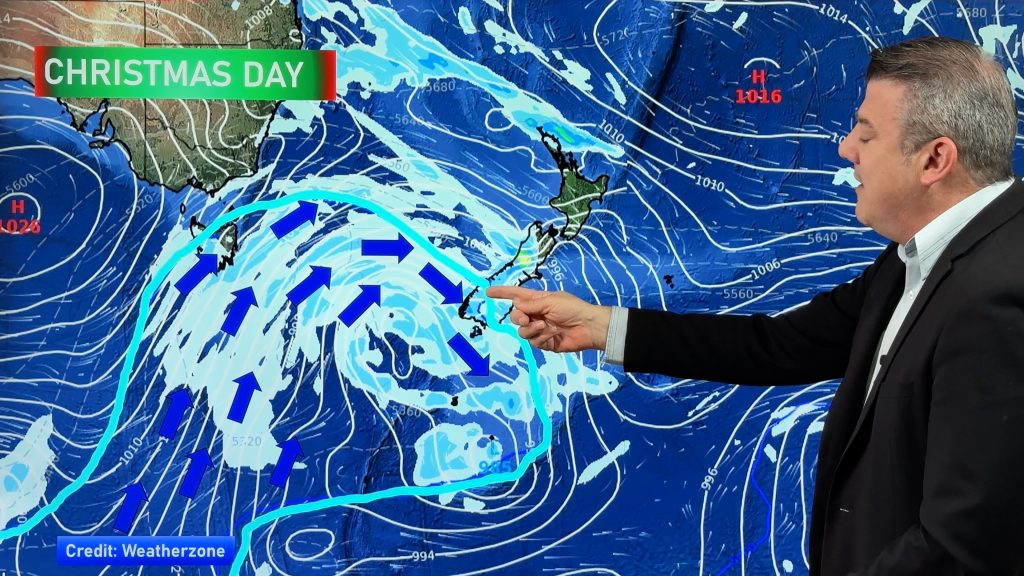
> From the WeatherWatch archives
A wave of storms swept through the South this week, laden with tornados that killed at least 300 people and left a multistate trail of destruction.
As authorities continue to assess the damage, recover bodies and restore power to thousands of homes and businesses in the storm zone, weather experts have many questions about the confluence of factors that formed such a violent weather system.
Did a perfect storm of sociological, meteorological and geographical events combine to create the second-deadliest tornado outbreak in the nation’s history since 1950? The University Corporation for Atmospheric Research’s Bob Henson, who recently wrote about the recipe for the storms, said it seems that way, but perfection is relative.
“You never know what’s perfect, because there may be another storm that’s even more perfect. Many say the 1974 super outbreak was the ultimate event,” he said.
In 1974, a super outbreak of tornadoes churned through 13 states, killing hundreds of people.
One thing is certain: Way before Wednesday’s storms came, forecasters saw the ingredients for trouble in the skies.
Weather forecasters had “very, very strong signals actually about five days out indicating a significant weather outbreak,” Greg Carbin, warning coordination meteorologist at NOAA’s Storm Prediction Center, told CNN on Friday.
But “saying a significant weather outbreak is coming is quite different from saying a massive tornado will move through Tuscaloosa at 5 p.m.,” Carbin said. “So knowing the big picture is pretty good, but you don’t know the specifics; you only know really after the thunderstorm begins to form.”
Around midday Wednesday in Mississippi, funnel cloud reports began.
“Tornadoes typically form from what are called super-celled storms,” Greg McFarquhar, a professor in the Atmospheric Sciences Department at the University of Illinois, told CNN on Friday. “You need a number of different ingredients. One is warm, humid air toward the surface. You need some sort of trigger that will start that air rising, that is associated with a cold front, and then a third ingredient is instability in the atmosphere,” he said.
“When a parcel of air starts to rise, if it’s warmer than the surrounding air, it’s going to be less dense than the surrounding air, and it will continue to rise,” McFarquhar said.
Throughout the day Wednesday, the National Weather Service issued tornado watches – a “particularly dangerous situation” – for parts of Mississippi, Alabama, Tennessee, South Carolina and Georgia.
Other agencies were issuing advisories as well. NOAA’s Storm Prediction Center in Norman, Oklahoma, issued its highest threat warning – “high risk” – for parts of the South. Shortly after, the prediction center issued red-colored headlines on its advisories, noting the likelihood of “destructive tornadoes … large hail up to 4 inches in diameter … and dangerous lightning.”
Another crucial ingredient was wind shear: volatility in wind speed and direction.
“Storms happen all the time,” Carbin said, “but for those storms to last, you need wind shear. If not, it will actually self-destruct. Wind shear will allow the storm to form a very efficient chimney, so to speak,” he said.
On top of it all was a fast-moving storm system that raked parts of six states.
“It first showed up in Mississippi,” Carbin said, “and at the same time, it wasn’t just one storm, it was five, 10, 15 erupting one after another in a 30-minute span. We know that. What we don’t know is how to provide a specific pinpoint forecast of a violent tornado. That’s still out of reach.”
Armed with data from the National Oceanic and Atmospheric Administration and the National Weather Service, meteorologists in the affected regions went live with coverage of the storms’ path. But there was a major problem in getting the word out.
High winds associated with the storm had already caused power outages in several areas of the tornado zone as tree limbs snapped and power lines fell. Henson said he heard anecdotally that some NOAA weather radio transmitters were down as well, adding to the confusion.
Among the series of storms was at least one, in Smithville, Mississippi, that was an EF5. The National Weather Service in Memphis, Tennessee, said Friday the twister was Mississippi’s first EF5 in more than 40 years.
An EF twister generates winds of more than 200 mph, according to the National Oceanic and Atmospheric Administration.
Soon afterward, witnesses reported tornado touchdowns in parts of Alabama.
In Alabama, where most of the damage was done, media and residents are calling another twister, captured on video, simply a “monster.”
But how could so many people perish in an event that was forecast?
“Sometimes, we assume that getting the warnings issued is the only task that needs to be done, ” Henson said. “But we’re seeing that even when the warnings are out, we can still have many people killed.”
He said the death toll may speak more to how people live today. “You can have perfect warnings, but if people don’t act on them … and when you have an event this big, you’re going to have some casualties. The open question is: Did there have to be 300?”
“I am concerned that there are a lot of places where safe shelter is just not a priority,” Henson said.
Carbin said storms need to be studied more, particularly when many factors are involved.
“Once a storm becomes part of an environment, does it enhance wind conditions or deteriorate them?” he said. “We still don’t understand all of those interactions yet.”
– CNN
Comments
Before you add a new comment, take note this story was published on 30 Apr 2011.





Add new comment